Natural Connections from Wisconsin to Alaska
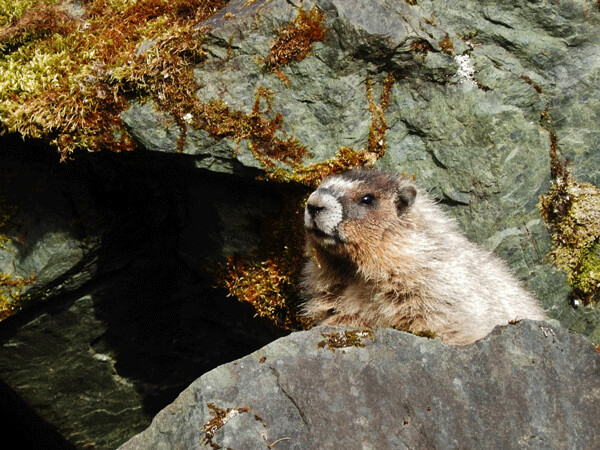
An eagle was soaring over the ocean as I pulled into the parking area at Eagle Beach north of Juneau, Alaska. After grabbing my camera and notebook I hurried over to the white-haired man dressed in a naturalist’s uniform of fleece jacket, hiking pants, and a big backpack with tripod hanging off the side. As I reached my hand out to introduce myself, I noticed that his beige baseball cap had a hummingbird on the front.
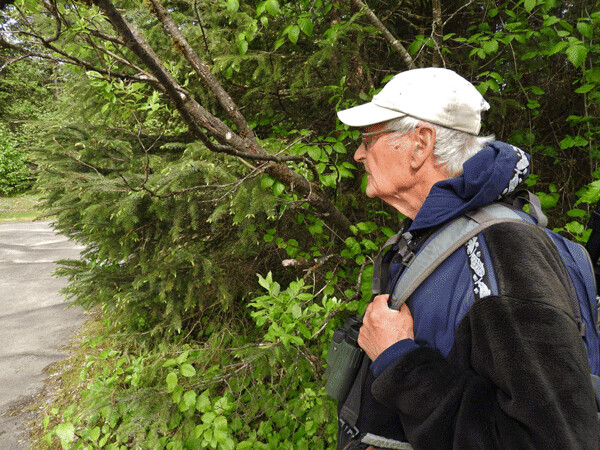
Bob Armstrong has written more than 27 books about the nature of Alaska. He left his studies the University of Washington early because the brand-new Alaska Department of Fish and Game was hiring biologists. After 20 years he retired so that he could follow his own research interests.
“Do you mind if we kinda go slow along the edge here and look for crab spiders?” Bob asked as we made our way down the strawberry-blossom-lined trail. Crab spiders are one of the species that caught Bob’s interest after he retired. In one of his many investigations using his two GoPro cameras, he recorded their activities. I was happy to help him look, since I’ve been fascinated by these beautiful critters, too. Crab spiders are smooth, not hairy, and they can change slowly between yellow and white in order to camouflage themselves on their floral perch. They don’t need to build a web, because they just nab insects attracted to the flower.
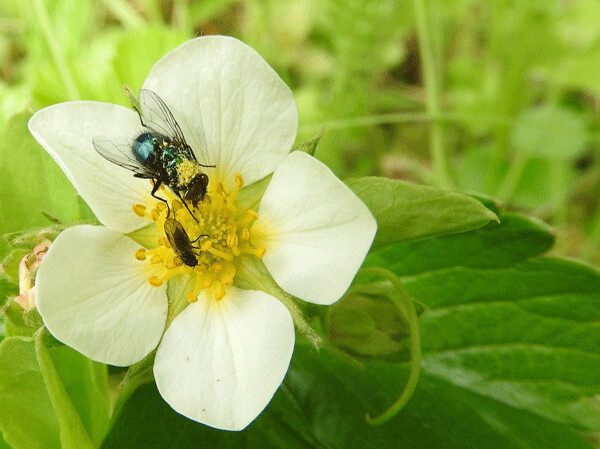
Sometimes crab spiders capture bees or other pollinators—I witnessed that earlier this spring—which can be detrimental to the flower’s chance at getting cross-pollinated. On the other hand, if a flower comes under attack by a “florivore,” (an insect that eats flowers), it can pump out extra volatile chemicals—this spider’s version of the Batman Signal—and a spider may come to the rescue.
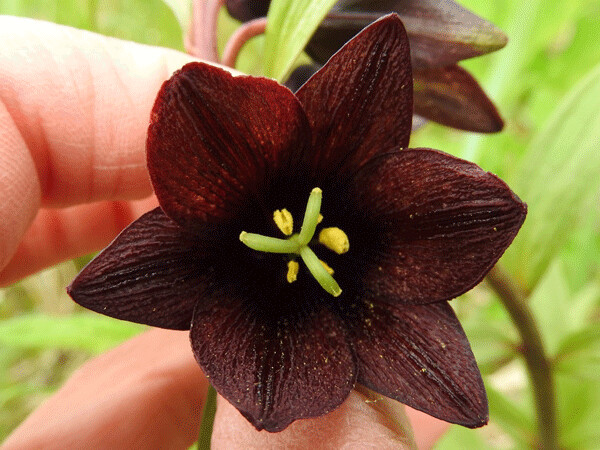
Passing by the gnarled trunk of a small alder, Bob stopped to look at it thoughtfully. After a minute I asked what he was looking for. “These are red-breasted sapsucker sap wells,” said Bob. “They are the first story in my Connections book.” Just like yellow-bellied sapsuckers in the Midwest, these colorful birds drill shallow holes into tree bark and either lap up the sap or eat the insects that are attracted to the sugar.
“The wells they drill are thought to be a critical early-season food source (both sap and small insects) for migratory hummingbirds, which may even time their arrival with that of sapsuckers,” wrote Bob in Natural Connections in Alaska.
This beautiful book, co-authored with Mary F. Willson and available as a PDF on his website: naturebob.com, is the reason I’d contacted Bob. I’d been tipped off that he’d written a book with almost the same title as mine, and he’d been gracious enough to say ‘yes’ when I asked if he’d go for a walk with me to talk about the natural connections of Alaska. I became even more excited to meet him once I talked with the naturalist guide Tim Hemme in Ketchikan, and Tim mentioned Bob’s books, too.
The sapsucker wells were no longer active, so we meandered out onto the gravely floodplain of a glacially fed river. The rich-brown, bell-shaped flowers of chocolate lily nodded above patches of green. Tim had given me their name, and from their color I’d deduced that their pollinators are flies or beetles. Bob pointed out bright yellow pollen dusted on the insides of the petals, and mentioned that blow flies crawl in—attracted by the scent of rotting meat to match the maroon color—and pick up those grains on the backs of their heads.
Being near the river got Bob talking about fish, and about all the observations he’s made with waterproof GoPro cameras. He’s used a dive weight to secure one into the rocks a low tide, then allowed the camera to do its magic while the tide came in. Later, when the tide was out again, Bob collected the camera. Among other things, he captured underwater images of seals playing, as well as sleeping on their sides, eyes closed.
“Do you want to see beach marmots?” Of course I did. We looked for crab spiders as we walked. Instead, I spotted an iridescent blue-green fly on a strawberry flower. Bright yellow pollen bedecked a patch of hairs behind its head. “That’s the blow fly with chocolate lily pollen,” confirmed Bob. I was struck by its beauty.
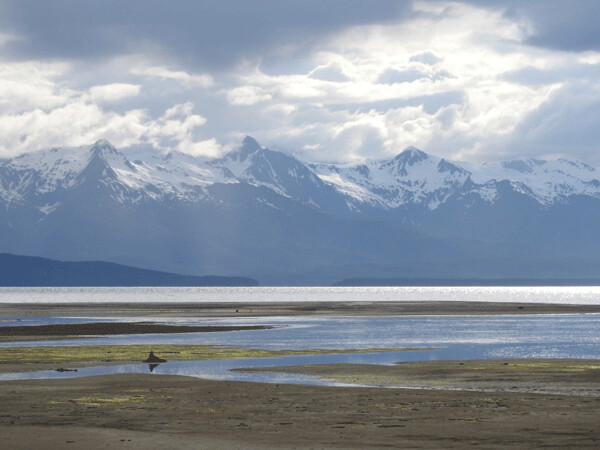
The water-washed beach graded into a thick field of grass and flowers, and those butted up against the rocks of the highway bank. We sat quietly in the sun-warmed grasses and watched the rocks for movement. Before too long, the white snout, brown face, and bleach-blonde fur of a hoary marmot poked out of a crevice, and another one scurried below. We could have watched them for hours. With the endless daylight of the north, it was hard to tell that the hour was getting late, but our watches indicated that more than a couple hours had passed.
Back at the parking lot, I thanked Bob for the walk and handed him a copy of my book. He said he enjoyed the walk too, and added “I can think of only one other person on Earth who can stroll that slowly and look at things.” It was, indeed, a natural connection.
Emily is in Alaska for the summer! Follow the journey in this column, and see additional stories and photos on her blog: http://cablemuseum.org/connect/.
For 50 years, the Cable Natural History Museum has served to connect you to the Northwoods. Come visit us in Cable, WI! Our new exhibit: “Bee Amazed!” is open.
